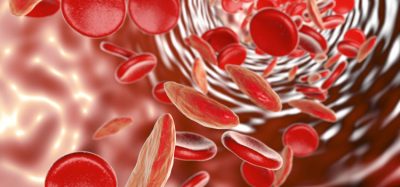Effective analgesics are ‘some way away’ due to bias in pain research, says researcher
Posted: 26 May 2020 | Hannah Balfour (Drug Target Review) | No comments yet
A review of pain research suggests it is biased towards males, despite most chronic pain sufferers being female, resulting in ineffective analgesics.


Despite research finding chronic pain sufferers are more often female and that male and females humans and rodents process pain differently, a recent review has revealed that studies of pain are biased to study male rodents and built on hypotheses from earlier experiments on males.
The authors of the review published in Nature Reviews Neuroscience stated that their paper highlights an important blind spot in pain research, particularly as it relates to drug discovery and development.
“The pain literature is biased such that, because of the overwhelming use of male animals in experiments, we are increasingly learning about the biology of pain in males. And wrongly concluding that this is the biology of pain. It’s only the biology of pain in males,” said Jeffrey Mogil, the author of the paper, a professor in McGill University’s Departments of Psychology and Anesthesia, the E. P. Taylor Chair in Pain Studies and the Canada Research Chair in the Genetics of Pain.
Biomarkers aren’t just supporting drug discovery – they’re driving it
FREE market report
From smarter trials to faster insights, this report unpacks the science, strategy and real-world impact behind the next generation of precision therapies.
What you’ll unlock:
- How biomarkers are guiding dose selection and early efficacy decisions in complex trials
- Why multi-omics, liquid biopsy and digital tools are redefining the discovery process
- What makes lab data regulatory-ready and why alignment matters from day one
Explore how biomarkers are shaping early drug development
Access the full report – it’s free!
According to the review, of the more than 1000 scholarly articles that Mogil reviewed, published between January 2015 and December 2019 in Pain, starting in 2016 more papers featured testing of both female and male rodents, with male-only studies dropping from 80 percent of the total in 2015 to only 50 percent in 2019.
However, Mogil found that, despite the inclusion of female rodents, the bias persisted: “The very ideas we come up with for experiments, are based on experiments in males and therefore they work in males and not in females. I discovered that in those papers where both sexes were actually tested and results reported on the differences by sex, the experiments “worked out”, meaning the scientific hypothesis being tested was found to be true, in males 72.4 percent of the time and in females only 27.6 percent.
“If there were no bias in the literature and there were a number of papers were the experiment worked in one sex and not the other, it should work in females just as often as in males. Why has this happened? Because the hypothesis that that experiment tested out was generated based on prior data from experiments on only males. So, of course, it only worked in males.”
Mogil concluded that, as a result of the bias, analgesics that work in females are still some way away: “This research suggests that lots of what is in the pipeline right now, if it works in anyone at all, will largely be men. Whereas, the clear majority of chronic pain patients have been and continue to be women.”
Related topics
Disease Research, Drug Development, Drug Discovery, Research & Development, Therapeutics
Related conditions
Chronic pain, pain
Related organisations
McGill University
Related people
Jeffrey Mogil








